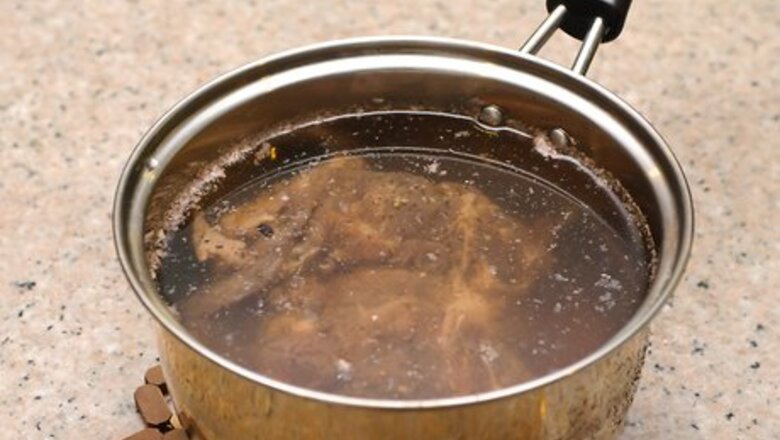
views
Reverse-Searing a Roast
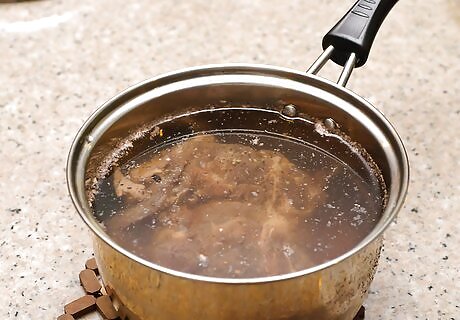
Brine the roast. Start with a 5 to 6 pound roast. If it has bones, the roast will probably have about 3 bones extending out from it. Rub the entire roast with a quick brine mixture and set it in a roasting pan. Chill the roast for at least 8 hours so the brine has a chance to flavor the meat. For a brine, try mixing together: 1 1/2 tablespoons of kosher salt 3/4 teaspoon of dried herbs (like thyme, sage, and rosemary, or a blend) 1/4 teaspoon of freshly ground black pepper
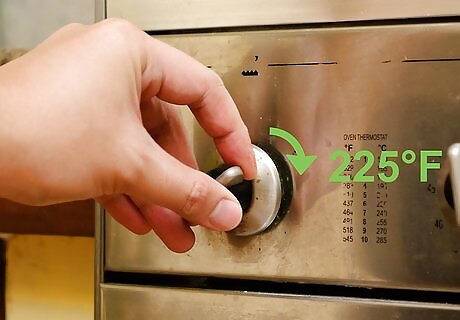
Bring the roast to room temperature and preheat the oven. Remove the roast from the refrigerator and let it sit out for 2 hours at room temperature. This will help the roast cook evenly. Preheat the oven to between 200-225 degrees F (95-105 C) while you wait for the meat. You should also move the rack to the lower third of the oven. This will ensure that you have space to set the roast.
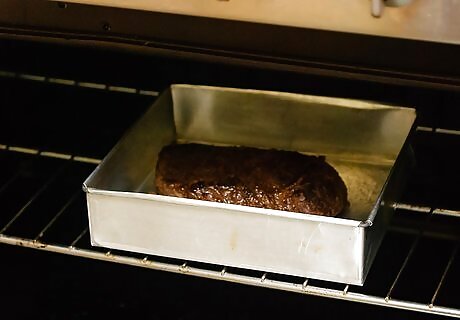
Cook the roast. Put the roast in the preheated oven and cook it for 3 1/2 to 4 hours or until it has an internal temperature that you're going for. For example, if you want a medium-cooked roast, cook the roast until it reaches 105 degrees F (40 C) for rare, 115 F (45 C) for medium-rare or 125 F (50 C) for medium. Remove the roast once it's as cooked as you'd like and let it rest for 30 minutes. Cover the roast with foil as it rests. This will help it retain heat and finish cooking. Use an instant read thermometer to get accurate temperature measurements.
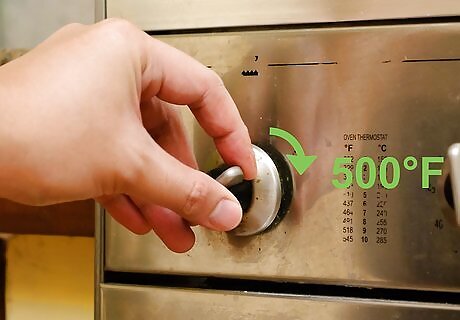
Increase the temperature to sear the meat. To get that great crispy crust on your roast, turn the oven temperature up to 500 degrees F (260 C) while the roast rests. Move the rack of the oven up as high as you can while still being able to fit the roast. Once the roast has rested and the oven is preheated, remove the foil and place the roast back in the oven. Roast the meat for 8 to 10 minutes. The roast should crisp up and turn dark brown as it sears. As an alternative, you can heat a cast iron, carbon steel, or heavy stainless steel skillet until really hot. Add the steak and butter to the skillet and cook until each side is well-browned, which should take about 45 seconds per side. Using tongs, hold steak sideways to sear the edges.
Reverse-Searing Grilled Steaks

Heat your grill. Create a 2-zone setup for your charcoal grill. To do this, heat your coals and carefully push them to one side of the grill. This will give you an empty or cool side where there are no coals. If you'll be using a gas grill, turn one half or side of the grill on and keep the other side of the grill off. This will give you a 2-zone setup.
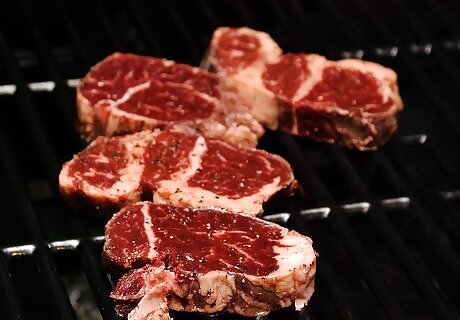
Cook the steaks over indirect heat. Place your steaks on the side of the grill that doesn't have coals underneath it. Grill the steaks until they come about 10 degrees lower than the overall temperature you want. For example, if you want the steaks to be finished around 130 degrees F (55 C) for medium rare, cook the steaks over indirect heat until they're at 120 degrees F (49 C). This will allow the meat to slowly come up to the proper temperature. You'll need to use an instant read thermometer to monitor the temperature of the steak.

Finish cooking the steaks over direct heat. When the internal temperature of the meat is almost where you'd like it, use tongs to carefully move the steaks to the side of the grill with the coals. Grill the steaks over direct heat for several minutes so the outsides char and seal in the flavor. You can turn the steaks while you're finishing them. If you turn them slightly, you'll be able to make hash marks.
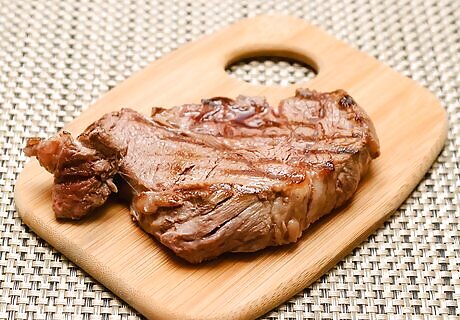
Let the steaks rest. Take the temperature of the steaks to determine if they're to your liking. Once they're at the right temperature, take the steaks off of the grill and set them on a serving plate. Let them sit for 10 minutes before you slice and serve the steaks. This will allow the juices redistribute within the meat. Use these temperatures as guidelines: Rare: 120 to 130 degrees F (49 to 54 C) Medium-rare: 130 to 140 degrees F (54 to 60 C) Medium: 140 to 150 degrees F (60 to 66 C) Medium-well: 150 to 160 degrees F (66 to 71 C) Well: 160 to 170 degrees F (71 to 77 C)
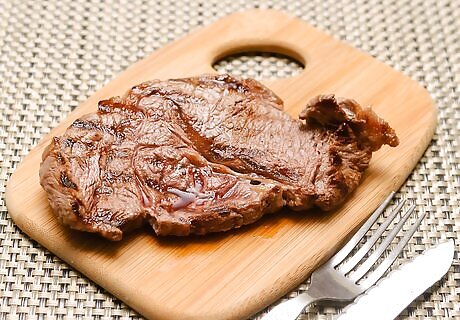
Finished.














Comments
0 comment